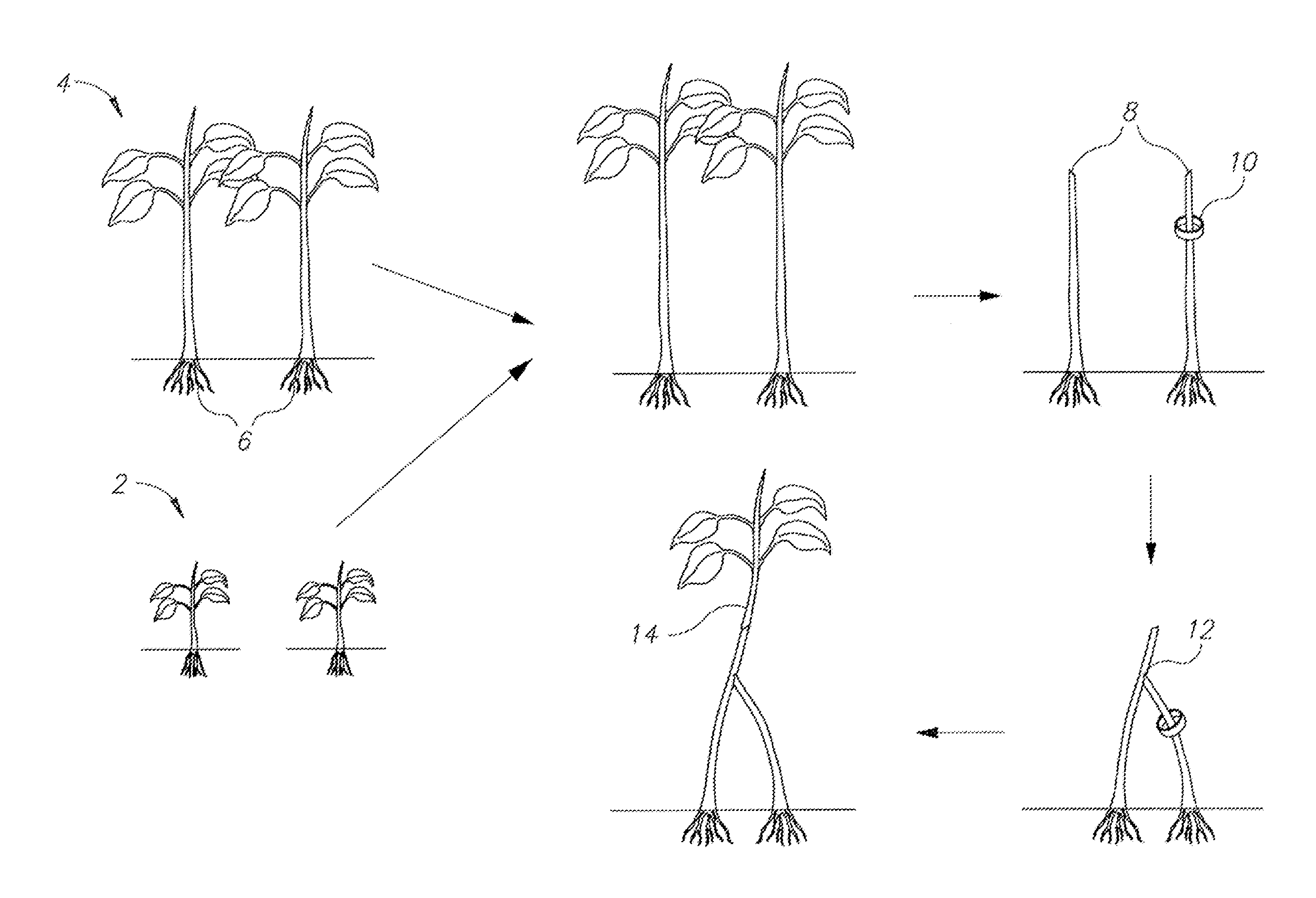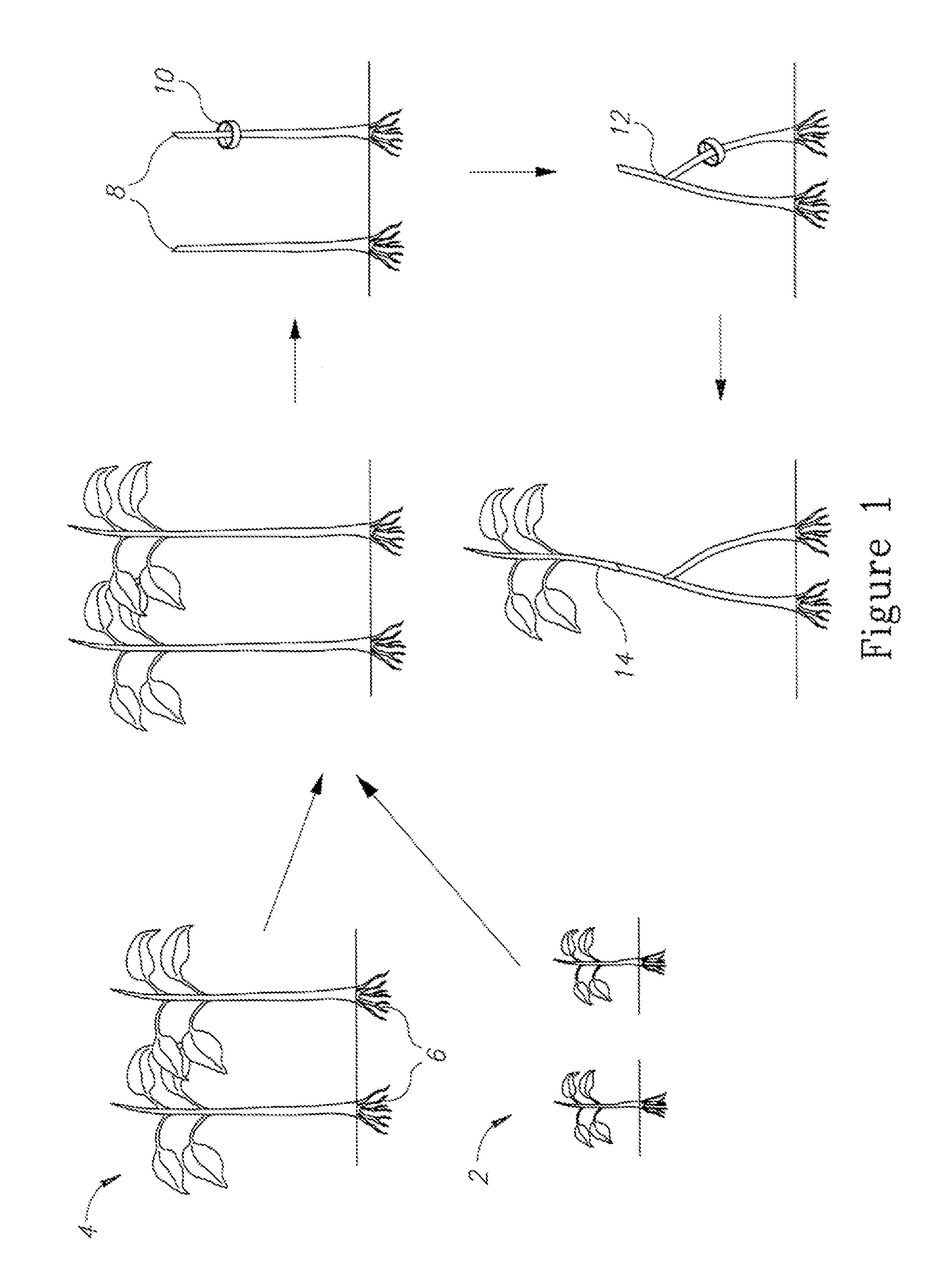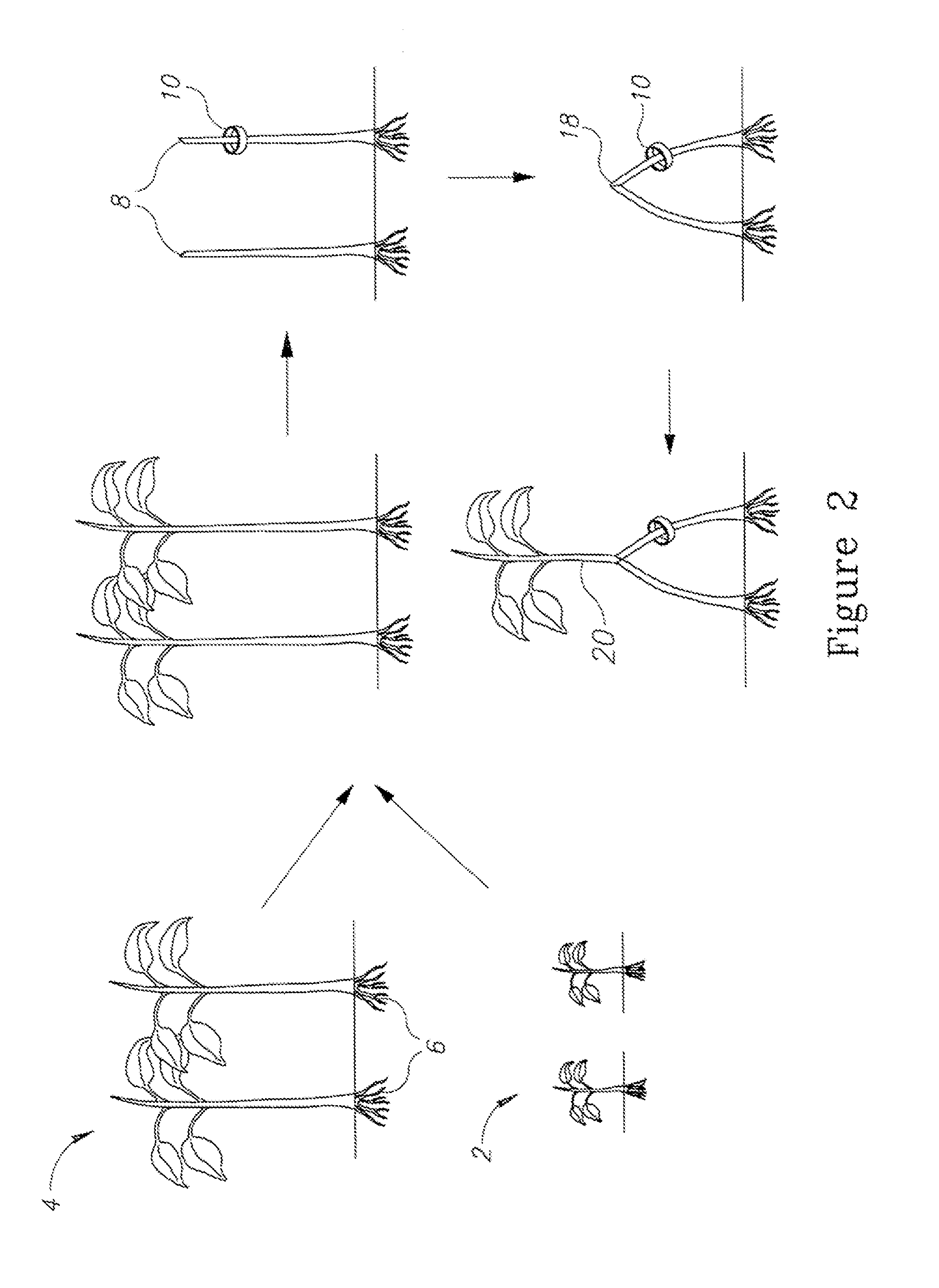Engrafted plants having at least one rootstock with predetermined growth control period
a technology of predetermined growth control period and engrafted plants, which is applied in the field of plant grafting method, can solve the problems of slow growth of the rootstock, death of the rootstock, and gradual impairment of the plant transport system by the collar and the rootstock, and achieve the effect of less stress
- Summary
- Abstract
- Description
- Claims
- Application Information
AI Technical Summary
Benefits of technology
Problems solved by technology
Method used
Image
Examples
example 1
Yield of Engrafted Plants Comprising a Scion and Two Rootstocks
[0126]To examine the benefits conferred by two rootstocks upon scions, engrafted plants of tomatoes having two rootstocks were compared to non-grafted tomato plants. The effect of combination of two rootstocks originated from 3 different varieties of tomato was tested. Seeds of the Ikram (Zeraim Gedera), Arnold (Zeraim Gedera), and Maxifort (DE ruiter) varieties were seeded in a nursery in 3×3×3 cm pots. One month old seedlings were used for the engrafting experiments.
[0127]In a first assay, performed in the Arava region in Israel, Ikram variety was used as a scion. Rootstock varieties were as indicated in Table 1 below. The grafting procedure was performed as follows: the ends of the scion and one of the rootstocks were cut at 45 degrees angle and joined together. The connecting point was about 5 cm above ground. The second rootstock was cut at about 60 degrees angle and attached 1 cm above the first grafting point (FIG...
example 2
The Yield of Engrafted Plants That Comprise a Continuous Plant and a Supporting Rootstock
[0131]Next, the effect of two rootstocks on a single scion in an additional grafting method was examined FIG. 6 shows an engrafted plant having a supporting rootstock and the connecting clips (right panel, enlarged). The engrafted pepper plants were of the 7158 variety (Syngenta®). Peppers seeds were planted in trays having 3×3×3 cm pots. One month old seedlings were cut as to enable the joining of the vascular tissues. As exemplified in FIG. 6, one of the seedlings was left continuous from roots to the top and the upper part of the second one was cut off. The engrafted plants were transferred to a controlled greenhouse with 95% humidity and artificial light. The engrafted pepper plants were planted at 40 cm intervals.
TABLE 3Number of fruit and total yield of engrafted pepper plantsPlants / plotNumber oftrailplanting plotsFruits per m2Total yieldControl20430.96.3 kgEngrafted164367.4 kgplantsEngraf...
example 3
Engrafted Plant with a Scion That Benefits From the Use of Plurality of Rootstocks for a Predetermined Time
[0134]The watermelon ‘Ecstazy’ and ‘Shintoza’ varieties cannot grow in the adverse environmental conditions in the Arava region in Israel. The reasons are not entirely clear and apparently involve a variety of biotic and abiotic stresses such as heat, water quality and high amounts of the fusarium fungi in the soil. One solution is to support the watermelon plant by engrafting a rootstock of a gourd. The gourd rootstock provides vigor and resistance to the soil pathogens. However, as described hereinabove the grafting of the gourd rootstock have several negatives outcomes on the watermelon such as stiffed texture, decreased sugar level, and unfavorable taste. Another solution is to use a double rootstock system. The ‘Ecstazy’ watermelon was grafted on a rootstock of a gourd and a rootstock of an ‘Ecstazy’ watermelon. As exemplified in FIG. 7, a plastic collar was placed around ...
PUM
 Login to View More
Login to View More Abstract
Description
Claims
Application Information
 Login to View More
Login to View More - R&D
- Intellectual Property
- Life Sciences
- Materials
- Tech Scout
- Unparalleled Data Quality
- Higher Quality Content
- 60% Fewer Hallucinations
Browse by: Latest US Patents, China's latest patents, Technical Efficacy Thesaurus, Application Domain, Technology Topic, Popular Technical Reports.
© 2025 PatSnap. All rights reserved.Legal|Privacy policy|Modern Slavery Act Transparency Statement|Sitemap|About US| Contact US: help@patsnap.com



